Understanding the Values of Recreation
May 20, 2021
A picture of a kayaker on a calm lake with trees that have a golden color to them from the fall season.
Forest Service research scientists have calculated the societal value of recreation opportunities across all national forests in the United States to be $14 billion annually. They have even calculated the value of the average individual, per day for 15 recreational activities. For instance on average individuals value non motorized boating at $119 a day. USDA Photo Deschutes National Forest in Oregon.
What would you pay to a hike through an ancient forest, where the wind makes the trees whisper history’s secrets? Or to go kayaking down a crystal-clear stream, where fish swim against the current, and the sun hangs like a chandelier overhead?
Understanding the value of these experiences to individuals and society has never been so important.
Yet that value isn’t readily apparent, said Eric M. White, a research social scientist with the Forest Service, who studies the economy of recreation in local communities.
“When goods and services aren’t bought in the market place, the monetary value is more difficult to observe,” said White, “So we try to estimate the value of recreation to the individual and to society as a whole by looking at the data.”
The Forest Service has been interested in putting a number on this seemingly priceless community benefit since 1916. That is when a Forest Service landscape architect Frank Waugh estimated a trip to a national forest to be valued at about 10 cents, or the price of a movie ticket in those times.
A picture of a night sky, stars are visible due to the dark sky, and a small camp fire is nearby.
In 1916, Frank Waugh, a Forest Service landscape architect, place a value on trip to a national forest at about 10 cents, or the price of a ticket to the movie theater in those days. Recently researchers, averaging 15 different recreational activities, estimate today’s value at $79. Photo by Deborah Lee Soltesz, May 2017. Source: U.S. Forest Service, Coconino National Forest.
In 1918 he wrote, “It should be said that the point of view of the writer is that the landscape of the wide Forest areas has very great esthetic and human value. The mountains, glaciers, lakes, streams, woods, and natural parks contribute largely and effectively to human health and enjoyment.”
Since then the agency’s approach to gathering data and the detail of that data have become increasingly nuanced. Using a scientific approach called benefit transfer, researchers gather value-related research and data from across the country’s $460 billion recreation industry.
“We take the calculations from all of those studies, reports and publications and plug that data into a statistical model to estimate values for individual activities and recreation as a whole,” said White, adding that the method is efficient and yields more in depth data.
Using the model in 2018, researchers calculated the average monetary value of specific recreation activities per person per day. The study illuminated national averages for a variety of activities, including backpacking ($44), biking ($97), downhill skiing ($93), non-motorized boating ($119), and motorized boating ($69), to name a few. The average of all the recreation activities listed was $79 per visitor per day.
A graphic – the value of priceless, a graphic showing the value of 14 different recreational activities.
USDA Forest Service researchers calculated the value of various recreational opportunities on national forests and grasslands. Below are some of those values to the average individual. Taken all together recreation across the national forest system is valued at $14 billion dollars annually. Graphic by Katie Garas.
Calculating the value of recreational opportunities for the individual, informs what the value is to society as a whole. We do can do that by multiplying the monetary value by the number of people participating in the activity. In 2018, the estimated societal value of recreation opportunities across all national forests in the U.S. was $14 billion annually. That’s money that is not spent but rather saved in the hearts and minds of outdoor goers across the country.
What’s more, that societal value likely recently increased as the pandemic prompted more people to head outdoors in 2020.
The individual and societal values of recreation are not just interesting numbers. They are important to consider when managing the land for other uses including, critical infrastructure such as power lines and roads, timber harvest, grazing and recreation facilities development.
“It’s important for us to consider how land management decisions could affect societal benefits such as recreation opportunities,” said White, “Since there isn’t a direct monetary value tied to recreation, like timber or grazing, being able to assess the value of recreation is key to making the decision that will maximize the benefit to society.”
Understanding individual and societal values also allows the Forest Service to wisely develop recreation opportunities that will have the most bang for the buck.
White offered a simple example of deciding whether to build a trail.
“Building a trail costs money. It costs money when you build it and to maintain. If we only look at those costs, we are missing a big part of the equation,” he said. “But if we look at how many hikers might use that trail each year, then we can calculate the benefit to society, allowing us to weigh the benefits and the costs and make the appropriate decision.”
Whether the activity of choice is a ride up and down the largest mountain in sight, carving up fresh powder on the slopes, or casting out into the mirror finish of a pond, recreationists of all types continue to find value and benefits in national forests and grasslands. The Forest Service will continue assessing and considering those benefits as we continue to care for the land and serve people.
Understanding the value of recreation
Andrew Avitt
Office of Communication
May 20, 2021
Recreation Sitka Conservation Society

